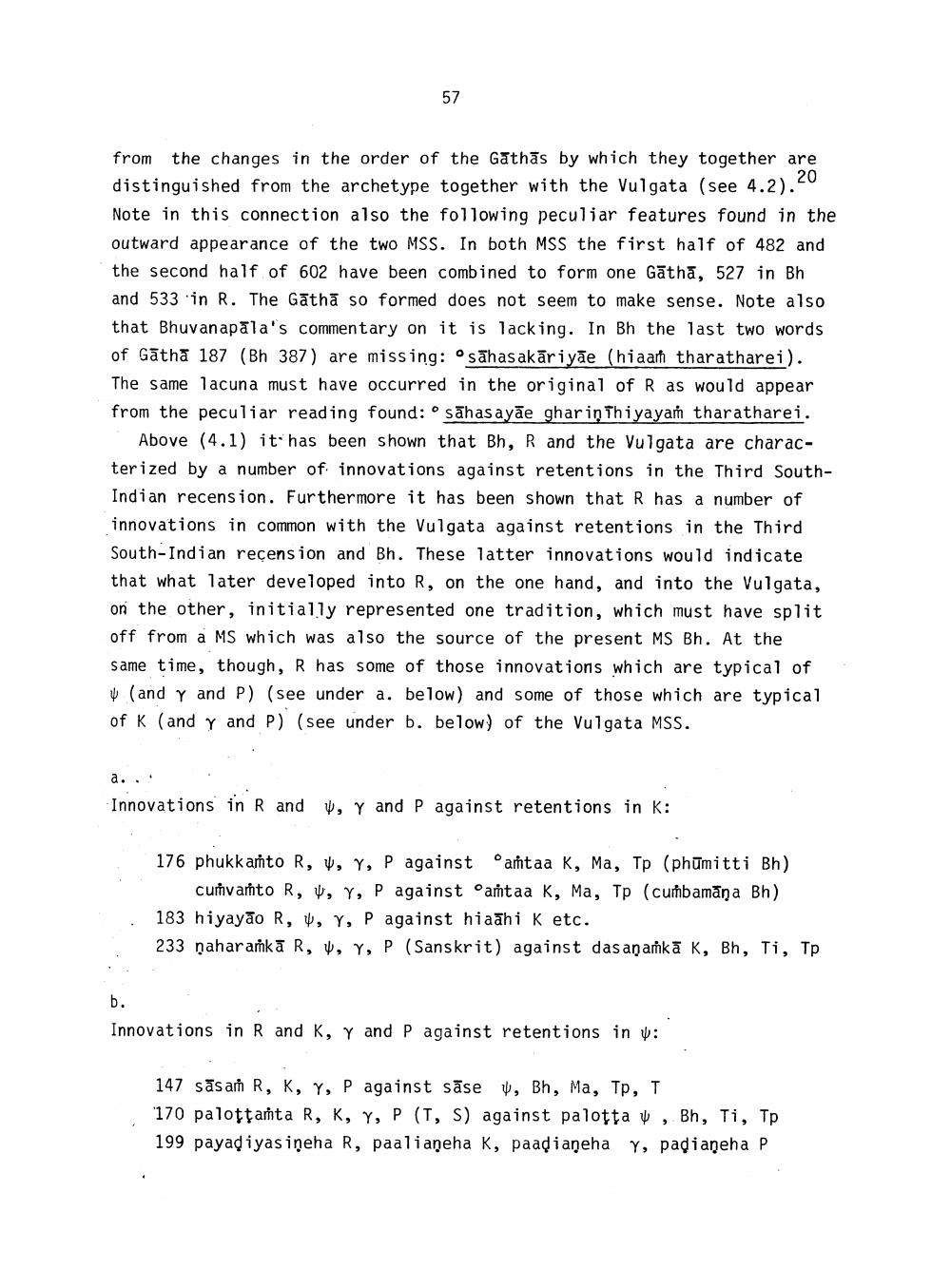________________
from the changes in the order of the Gathās by which they together are distinguished from the archetype together with the Vulgata (see 4.2).20 Note in this connection also the following peculiar features found in the outward appearance of the two MSS. In both MSS the first half of 482 and the second half of 602 have been combined to form one Gathā, 527 in Bh and 533 in R. The Gathā so formed does not seem to make sense. Note also that Bhuvanapala's commentary on it is lacking. In Bh the last two words of Gātha 187 (Bh 387) are missing: sāhasakāriyae (hiaath tharatharei). The same lacuna must have occurred in the original of R as would appear from the peculiar reading found: sāhasayāe ghariņThiyayam tharatharei.
Above (4.1) it has been shown that Bh, R and the Vulgata are characterized by a number of innovations against retentions in the Third SouthIndian recension. Furthermore it has been shown that R has a number of innovations in common with the Vulgata against retentions in the Third South-Indian recension and Bh. These latter innovations would indicate that what later developed into R, on the one hand, and into the Vulgata, on the other, initially represented one tradition, which must have split off from a MS which was also the source of the present MS Bh. At the same time, though, R has some of those innovations which are typical of
(and y and P) (see under a. below) and some of those which are typical of K (and Y and P) (see under b. below) of the Vulgata MSS.
a... Innovations in R and W, Y and P against retentions in K:
176 phukkato R, X, Y, P against oastaa K, Ma, Tp (phūmitti Bh)
cuivato R, X, Y, P against oamtaa K, Ma, Tp (curħbamāna Bh) • 183 hiyayão R, W, Y, P against hiahi K etc.
233 naharaṁka R, W, Y, P (Sanskrit) against dasaņańkā K, Bh, Ti, Tp
Innovations in Rand K, Y and P against retentions in y:
147 sāsan R, K, Y, P against sāse , Bh, Ma, Tp, T '170 palottata R, K, Y, P (T, S) against palotta y , Bh, Ti, Tp 199 payadiyasineha R, paaliaņeha K, paadiaŋeha Y, padianeha P




